On The Rise - Moriah Szpara Confronts the Complexities of Herpes

The Szpara Lab needs more data.
That’s because finding a cure for Herpes is a very complicated challenge. For nearly a century, researchers have been proposing vaccine candidates, but despite some promising leads, nothing has ever been established as a definitive method to stop Herpes Simplex Virus 1 and 2 (HSV-1 and HSV-2).
Research Technologist Chris Bowen tees up one of the key driving questions of the lab’s inquiry — the one that makes their task so daunting: “How much genetic diversity is present in HSV strains circulating out there in the world?”
Unlike many viruses—like say, the flu—which affect people for short periods of time and are killed off by the host's immune system, the herpes viruses (Herpes Simplex Virus 1 and 2) stay with their hosts for an entire lifetime, evolving and adapting. This means that at a global level, herpes may well be more genetically varied than other, short-lived viruses, and there’s a wide variation in how it manifests. For some infected people, minor symptoms might occur one time but never again, or flare up periodically. In others, symptoms can be severe, painful, and recurring—and especially in newborns, potentially life-threatening.
A lot of the lab’s work takes place in the swirl around the causes and implications of this diversity.
“Each person that has an HSV-1 infection harbors a slightly different version of that virus from everybody else,” says Principal Investigator Moriah Szpara, Associate Professor of Biology, and Biochemistry & Molecular Biology. “That means not only are they carrying a slightly genetically different pathogen, but the way it manifests in them could also be slightly different.
“We need a vaccine that encompasses not just one really bad virus strain, but the million versions of this virus that are out there,” says Szpara. “If you’re protected against a hundred thousand of them, there’s still a chance that you’re going to interact, at some point, with one that breaks through your vaccine immunity.”
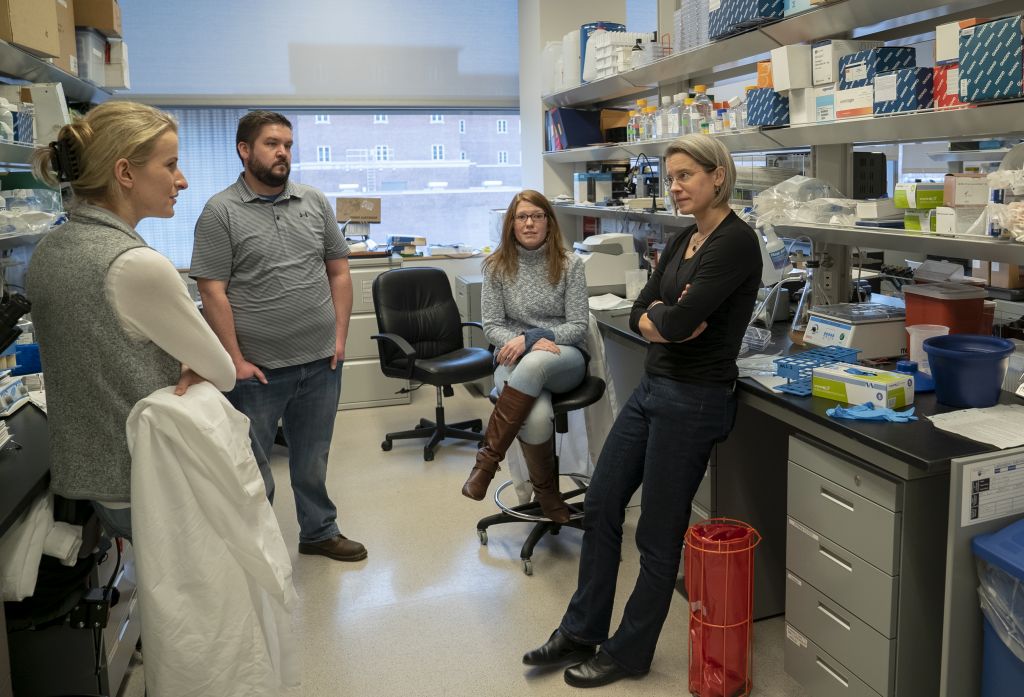
To address this wide range of potential infections, the Szpara Lab approaches HSV and other viruses in a thorough manner, combining traditional virology with cutting-edge genomics, and a wholehearted embrace of big data. But to build an optimized set of tools for diagnostic or therapeutic use, they need more samples of the viruses, from more people, from all around the world. And they need the most up-to-date information possible. “We need to know what viruses are out there now, not what was around 30 years ago,” says Szpara.
Part of the problem is the ethnocentrism of the research on a disease with global impact. Experts estimate 7 in 10 people worldwide carry a form of HSV, but the global sampling of this virus thus far has in no way encompassed its reach.
“For the most part throughout history, Europe and North America have been the predominant sampling sites,” says Bowen. “But that leaves large portions of the human population under-represented.”
Another issue is the availability of the most important data sources: neonatal viral infections are considered the highest-priority cases, but obtaining samples from newborns is a delicate business. For Szpara, that has meant building up credibility and proving the lab’s methods at a smaller scale.
“Infected infants are such tiny human beings,” says Szpara. “They are precious, and you do not collect samples from them unless there is a dire medical need. You don’t touch or intervene unless you really have to, to save their lives. We’ve had to prove that our sample analysis is worth using a tiny fraction of the samples that are available to study.”
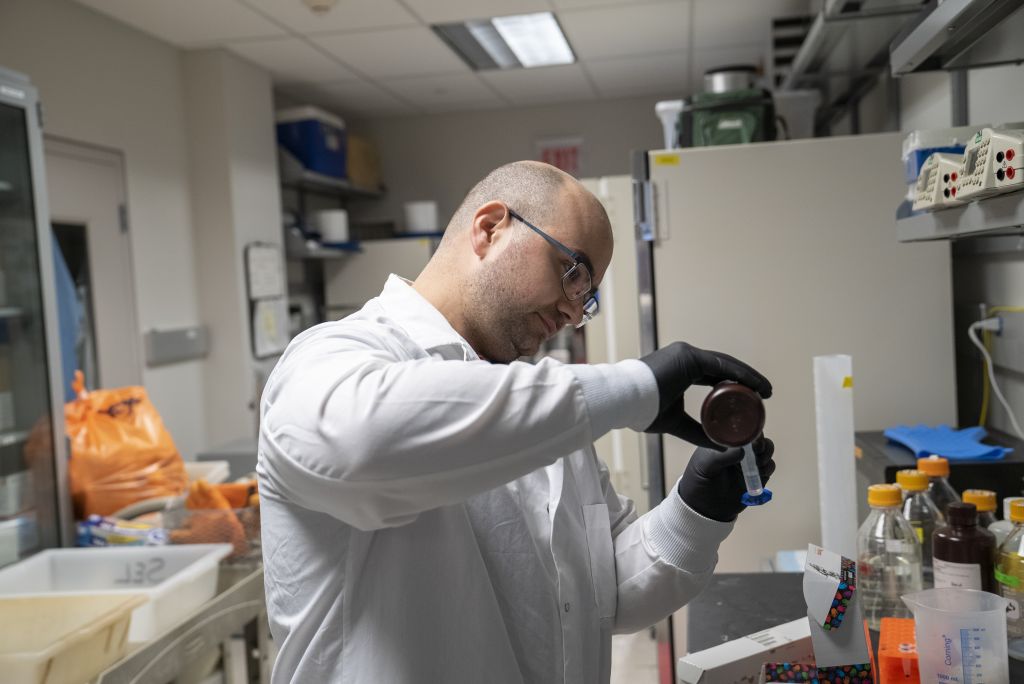
Her group began developing these methods by helping to track infections on local poultry farms, in a collaboration with Andrew Read, now director of the Huck Institutes. From there, the lab expanded to working with samples from adult humans, refining their methods, and building confidence in the merits of these approaches with their eventual collaborators.
“Five years ago, our clinical collaborators might not have entrusted us with these samples.”
For each project, Szpara starts small. The lab had an early paper just about one patient, which became the foundation for an analysis of 10 patients and a dozen samples for the next paper, which laid the groundwork for a current study of 40 people and hundreds of samples. “Those are not made-up numbers, that’s really the lab’s papers – including Molly’s latest research,” Szpara said.
“Molly” is Biochemistry, Microbiology, and Molecular Biology graduate student Molly Rathbun, a fellow in the Huck Institutes-administered Computation, Bioinformatics, and Statistics (CBIOS) NIH training program.
“I’m investigating the comparative genomics aspects of HSV-1 infections,” said Rathbun. “What I think is really exciting about what we’re doing with these studies is that we can sample viral genomes directly from clinical isolates, rather than having to expand the virus in a laboratory culture environment. That lets us ask questions about the natural genetic variation of HSV-1 that circulates around the world, and how that develops, and what that might mean in the context of infection outcomes.”
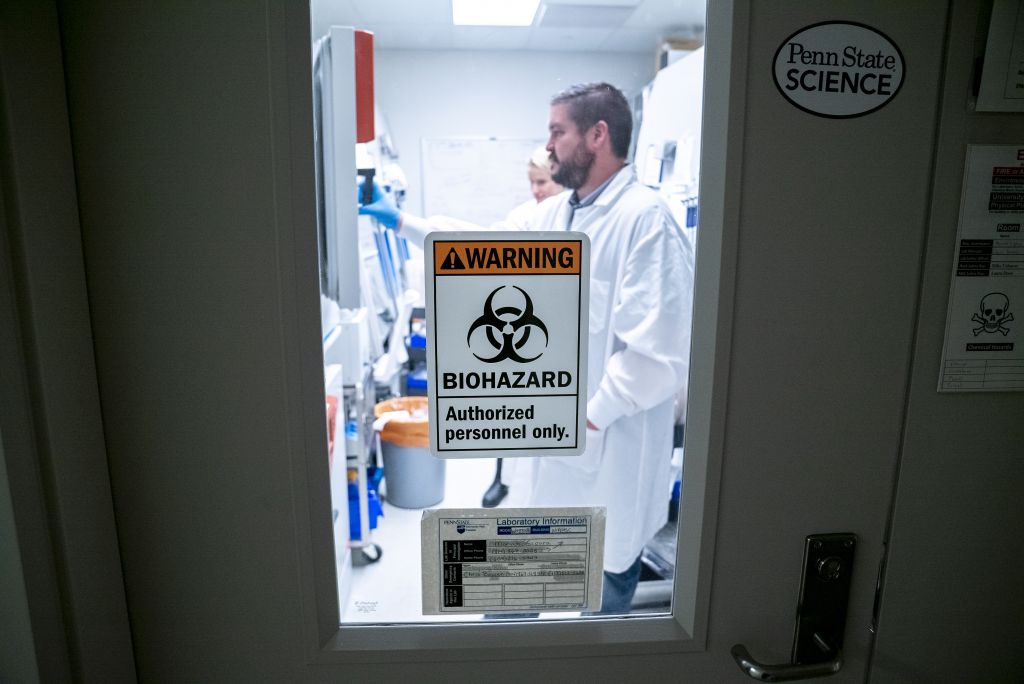
The difference between lab samples of HSV and “wild” strains is another important wrinkle in the Szpara Lab’s approach. Because HSV is so long-lived and has so much opportunity for adaptation, old strains isolated years ago for study can be very different from the bugs currently making people sick.
“What the virus looks like in the real world is much more wild and has much more variability than what you get when you domesticate it in the lab,” says Szpara. “It’s a wolf versus a little puppy.”
“We have to be smarter than the viruses if we want to beat them. What’s been done thus far to make a vaccine has failed. Those vaccines were based on domesticated, lab-adapted strains. If the prior vaccine candidates were inducing good immunity to lab strains, that’s a solid start – but the goal of vaccine development is to get something that can induce immunity to the whole diversity of viruses out there, and that can protect a human despite the fact that these viruses have evolved to be genetically flexible.”
Szpara values classic virology but recognizes that success will require her to push the envelope further.
“I think it’s great that there are labs that specialize only in computational analyses or focus on the epidemiology, but we’re trying to integrate multiple types of analysis. This is hard and challenging, so each person here is working on a slice of that, but that’s the only way we’re going to get there.”
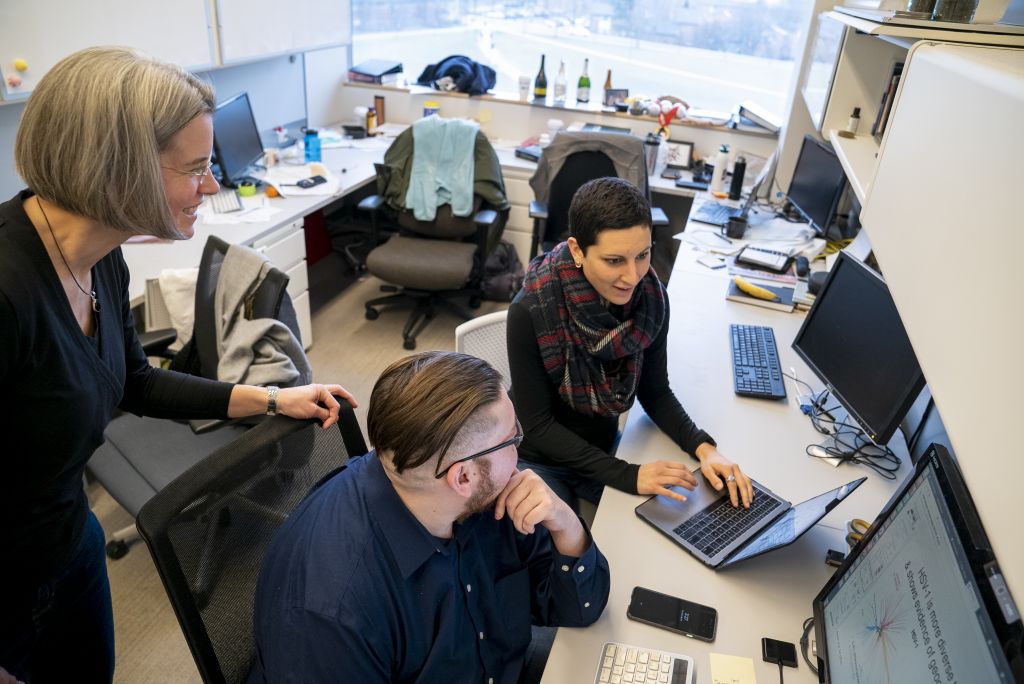
Szpara has carefully assembled a team that shares her passion for and feeds off her enthusiasm for the work.
“I might colloquially refer to members of the lab as ‘my people,’” says Szpara, “but I try to make it really clear that they’re all independent scientists, and we’re functioning as a team. It’s not any one person who can ever pull off any one of these projects alone. Nor is there any one person who has all the best ideas. It’s better that we all acknowledge what we don’t know and then recognize who else has the expertise that we need.”
“She’s spooky good at finding the right fits for the lab,” says postdoc Chad Kuny. “She’s very good at not taking the lab culture for granted.”
“I’m looking for people who fit with the awesome dynamic we’ve already created,” agrees Szpara.
“A lot of it is Moriah’s mentorship,” says the lab’s newest member, Molecular, Cellular, and Integrative Biosciences graduate student Sarah Dweikat, “But it’s also the way that the lab functions. She has set up a dynamic where the whole lab will mentor new people.”
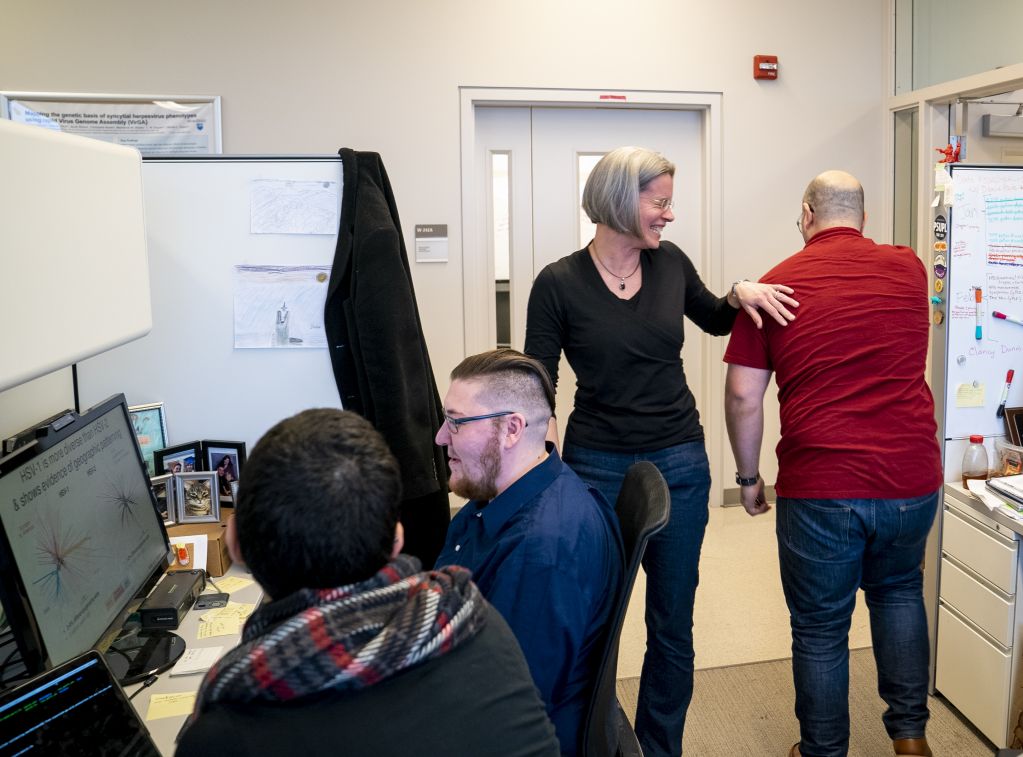
At one point, posing for promotional photos with Rathbun and Computational Scientist Daniel Renner, someone makes a joke. Szpara cracks and within seconds, goes deep red in the face, wiping away tears as she and her team laugh.
“Her energy level can be infectious,” admits Research Technologist Chris Bowen. “I find myself wanting to move projects along faster so that I can have the data to share because she’s always so ‘up’ and cheerleading for us to get good results. I’m motivated to try and match those energy levels, but I never do.”
“We work well together,” says Szpara. “Because we’re sharing data and ideas all the time, we can be more productive and efficient about pushing forward the ideas that matter. The ideas we can’t sort out now don’t get thrown out. We save them and we often circle back and realize, two years later, aha—we can do something with that! We pick those ideas back up and thus, the lab has a forward momentum that I think has worked really well.”
In targeting HSV, Moriah Szpara picked a tough fight. But she realizes that such a dynamic disease requires more than just her own considerable brainpower. She’s building a team whose tenacity and diversity of thought might just match that of the disease. Herpes had better watch its back.